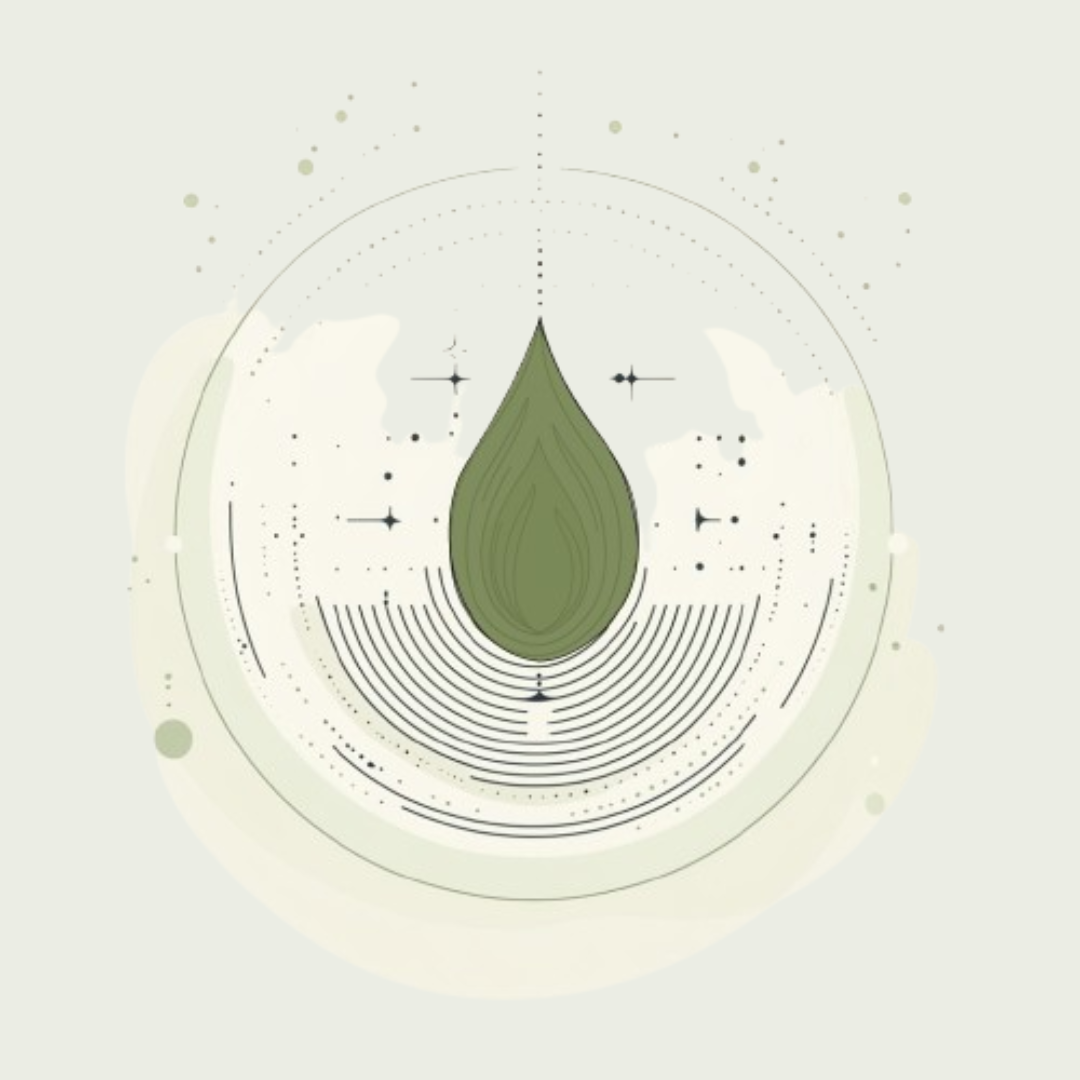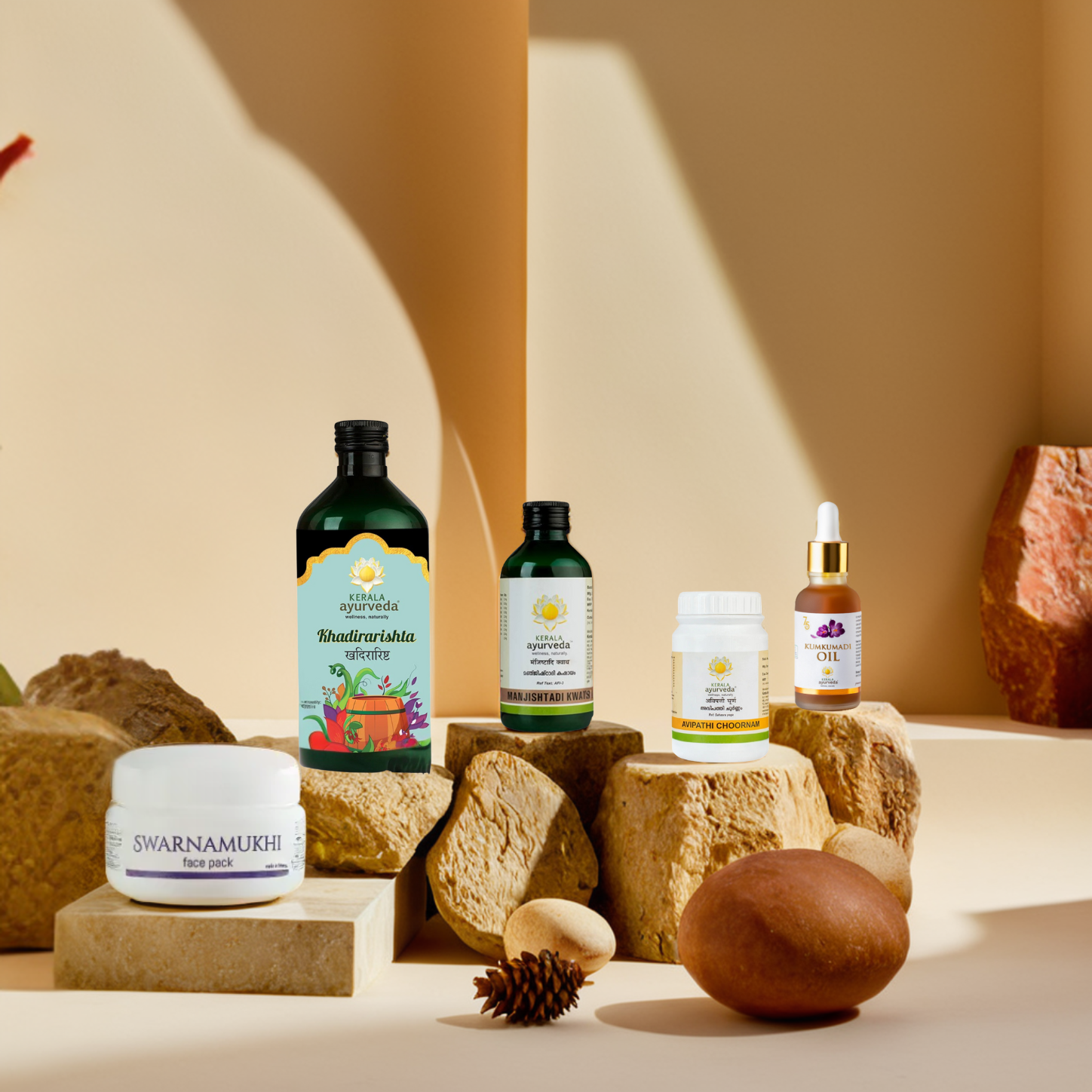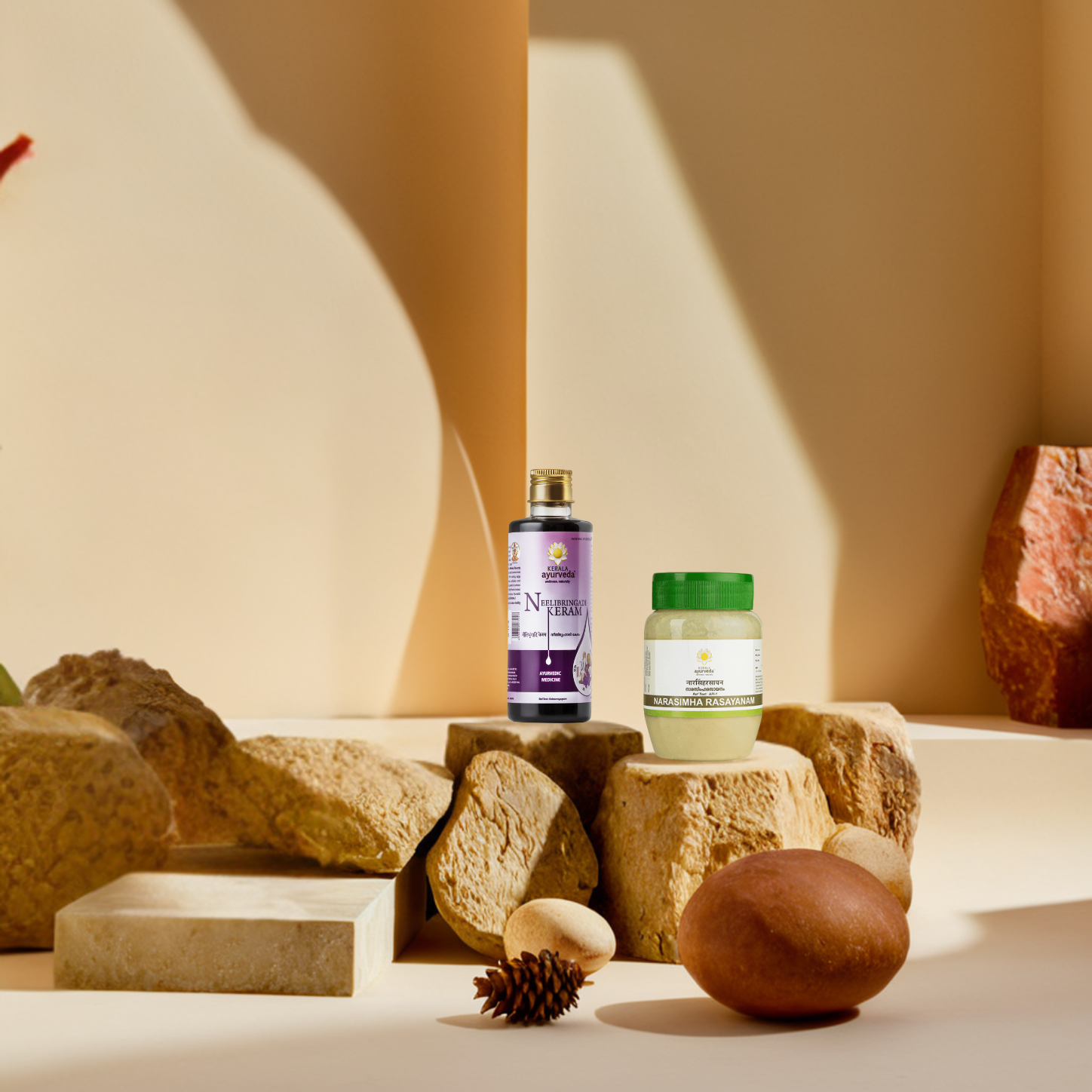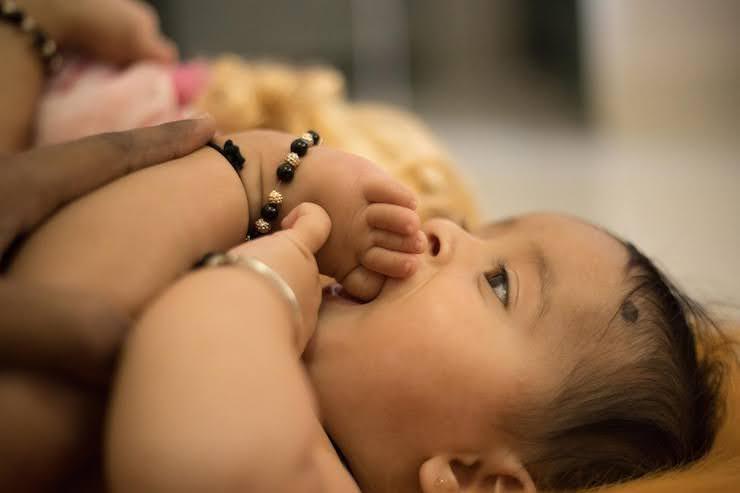Highlights
In many Indian families, massaging a baby before bath time is a special tradition. It’s not just about using oil; it’s a quiet, loving moment that brings everyone closer. This beautiful tradition, known as Shishu Abhyanga (baby massage), has been part of Indian homes for generations.
And honestly, there’s a reason it’s lasted so long. Babies grow so fast; their bones lengthen, muscles develop, and their immunity starts to build. Regular oil massages can really help support all that growth. It not only nourishes their tiny bodies and improves circulation, but also is a beautiful way to bond with your baby through every loving touch.
In this blog, let’s explore Shishu Abhyanga and how it supports your baby’s growth, brings comfort, and helps you create a soothing daily routine. You’ll also find simple tips on how to make this gentle Ayurvedic massage a part of your baby care using trusted oils.
What is Shishu Abhyanga (Baby Oil Massage)?
Shishu Abhyanga is the Ayurvedic tradition of giving babies a warm oil massage. You’ve probably seen those sweet moments when a baby gets a cozy oil massage and is then wrapped up in a soft cloth. That’s Abhyanga! It’s still one of the most loving ways to care for a newborn.
Birth can be tough on both mom and baby, and in Ayurveda, it’s believed that this experience can slightly disturb the body’s natural balance, especially the Vata dosha. A calming oil massage helps soothe Vata and supports healthy growth.
While these moments feel warm and nurturing on the outside, a lot happens during a massage.
The Science Behind Baby Massage
Ayurveda and modern science now align on many of the benefits of baby massage. It isn’t just relaxing; it actually comes with some pretty amazing benefits. Studies now show that it can:
- Increase oxytocin levels, which is the feel-good bonding hormone, in both the mom and the baby
- Support neuromuscular development by gently helping the baby’s muscles and nerves grow
- Improves weight gain and nutrition, especially when the massage uses the right oils.
Now that you know how massage works, it’s easier to appreciate the many ways it helps your baby.
What are the Benefits of Abhyanga for Babies?
A simple Abhyanga massage gently supports your baby’s growth, comfort, and well-being. Just a few minutes of daily massage can make a big impact on your baby’s early development. Massage oil helps:
- Strengthen the emotional bond between you and your baby with skin-to-skin contact, eye contact, and communication.
- Helps your baby relax and feel more comfortable.
- Supports their neuromuscular wellness and coordination.
- Improves the softness and glow of their skin.
- Boosts the baby’s immunity, helping them stay strong and healthy.
- Enhances natural sleep patterns for better rest.
- Helps with thermoregulation and supports your baby in maintaining a healthy body temperature.
- Feeds the scalp and encourages healthy hair growth.
- Stimulates the digestive system, easing common issues like colic, constipation, and gas.
- Supports healthy weight gain for growing babies.
- Helps promote the overall growth and development of babies and toddlers.
Once you realize all the incredible benefits of Abhyanga, it’s easy to see why this gentle massage is such a gem. Now, the question is, how do you make it a regular part of your daily routine?
When and How Should You Perform Baby Massage?
The best times to massage your newborn are usually in the morning or evening, when their tummy is empty. If they’ve just been fed, waiting about an hour before starting is a good idea. You can either sit your baby comfortably or lay them down on a soft, clean sheet, or even in a baby tub, whatever works best for both of you.
If you want to make baby massage safe and enjoyable for both you and your little one, here are a few easy tips to keep in mind:
- Warming the oil: Before you start, warm the oil just a little bit. The easiest way is to put the amount you need in a small bowl and set that bowl in some warm water for a few minutes.
- Gentle massage technique: Use gentle, circular motions with your fingertips or palms as you massage. Begin at the head and gradually work your way down to the feet, applying light and soothing pressure.
- Watch your baby’s comfort: Keep a close eye on your baby’s reactions throughout the massage. If your baby seems uncomfortable or fussy, step back and try again another time.
- Avoid sensitive areas: Do not massage your baby’s face, head, or genital area. Also, be careful to never apply pressure on the soft spot at the top of the head, known as the fontanelle.
- Maintain light pressure and hygiene: Always use light pressure while massaging, and ensure your hands and nails are clean and trimmed to protect your baby’s delicate skin.
- Check for allergies and avoid eyes: Keep oil away from your baby’s eyes. If you’re trying a new oil, test a small amount on your hands first to check for allergic reactions before applying it.
- Secure your baby: Make sure to hold your baby gently but securely during the massage so they don’t slip or slide.
- Follow up with a lukewarm bath: After the massage, give your baby a lukewarm bath. Just double-check that the water is comfortably warm, not too hot.
- Keep baby warm after bath: After the bath is finished, keep your baby warm and calm. Avoid exposure to cold wind to maintain their comfort.
Remember that baby massage should always be done gently and with care. It’s always a good idea to check with your pediatrician before starting a massage routine to ensure it’s the right fit for your little one.
While baby massage can be wonderful, there are times when it’s best to hold off or be extra cautious.
When Should You Avoid Abhyanga Baby Massage?
Abhyanga is wonderful, but it’s not always the right time for a massage. Sometimes, skipping it is the best way to ensure your baby stays happy and healthy. Here are some times when you might want to skip the massage or check in with your doctor first:
- Avoid massaging your baby right after feeding. Give it some time so their tummy doesn’t get upset.
- If your baby is showing signs of indigestion, like vomiting or loose stools, it’s best to wait until they feel better.
- Skip the massage if your little one has a cold, cough, fever, or isn’t feeling well.
- For premature or low birth weight babies, always consult your doctor before starting any oil massage.
- If there’s a skin rash or infection, avoid massaging the affected area; it can make things worse or spread the infection.
Once you know when to be careful with baby massage, the next step is picking the right oils.
Which Oils Are Good for Baby Massage?
Choosing the right oil for your baby’s massage is a bit like finding their favorite comfort blanket. It depends on the weather, your baby’s skin, and what feels best for you. Here are some oils that lots of parents really like:
- Nalpamaradi Oil: Nalpamaradi Keram helps brighten dull skin, repairs pigmentation, and environmental damage. It is enriched with Nalpamara, Ushira, Kushta, Manjistha, and Haridra.
- Eladi Oil: Eladi Keram relieves rashes and itching and balances Vata and Kapha Doshas. It is enriched with Sukshma Ela, Sthula Ela, Tuskara, Kushta, Phalinim, and Coconut Oil.
- Virgin Coconut Oil: Virgin Coconut Oil is a pure, nutrient-rich, antioxidant-packed oil promoting skin and hair health. It keeps skin moisturized and firm and is ideal for newborn baby massage.
- Karpooradi Oil: Karpooradi Oil is a warming chest rub oil that's perfect for kids. It is enriched with Karpoora, Ajamoda, and Coconut Oil, designed to soothe and comfort your respiratory system.
Ayurvedic Oils You Can Trust
Kerala Ayurveda’s Nalpamaradi Keram is made with the bark of four ficus trees in a coconut oil base. It’s great for reducing sun damage and tan, and yes, it’s safe for babies too! Just make sure to dilute it with an equal amount of coconut oil, since it contains real turmeric, which might leave a slight yellow tint on the skin.
Another Ayurvedic gem! Eladi Keram is soothing and works wonders on dry skin and eczema. Like with Nalpamaradi, just dilute it with an equal amount of coconut oil before applying.
This is just a quick reminder to always go for oils that are pure and don’t have any added fragrances or chemicals. Before using a new oil, try a small patch test on your baby’s skin to make sure it’s safe. If your baby has any health issues or really sensitive skin, it’s a good idea to talk to your pediatrician before starting regular massages.
Conclusion
Shishu Abhyanga isn’t just a calming daily routine. It’s a loving way to nurture your baby’s whole being. Based on ancient Ayurvedic traditions and supported by today’s science, this gentle oil massage helps your little one grow healthy, sleep better, and feel close to you in a special way.
Whether you’re a first-time parent or just getting back in touch with traditional ways, this simple, loving touch can become one of the most special parts of your baby’s day. Just pick an oil that feels right, keep your touch soft, and let your baby guide the pace.
Want to give your baby the best start with Ayurvedic care? Explore our range of gentle, nourishing baby care products and experience the age-old tradition of Shishu Abhyanga. Visit Kerala Ayurveda today and nurture your baby with the wisdom of Ayurveda.
FAQs
1. How long should you massage a baby?
A gentle massage for about 15 minutes is usually perfect for a baby. It’s enough to help them relax, stimulate their senses, and improve blood circulation, without overwhelming them.
2. What makes baby massage so good for your baby?
Baby massage supports your baby’s overall health while strengthening your emotional bond. Gentle strokes can boost digestion, circulation, and breathing, ease colic, and promote relaxation, making it both a nurturing and healing experience.
3. When is the best time to massage a baby?
The best time to massage is when your baby is calm, alert, and not too hungry or full, often after a bath or before bedtime. Choose a quiet time when you and your baby are relaxed and not rushed.





